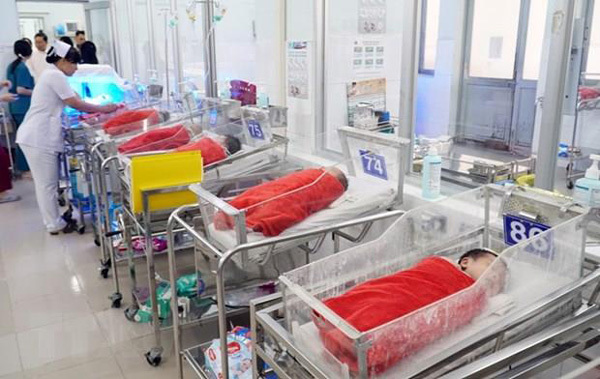 |
The General Office for Population and Family Planning has recently conducted a survey on family building and fertility awareness of Vietnamese adults. Could you tell us about the results of the survey?
This is a population-based survey, which has covered desired family formation and the ideal number of children for each family of nearly 14,400 adults.
Data has been collected on three different channels, including the official website of the General Office for Population and Family Planning, the website of an online newspaper and the hard-copy version of the questionnaire issued by the Vietnam Health Strategy and Policy Institute.
The results showed that the majority of participants desired two or three children. Up to 49.4 per cent of the participants wanted to have two children and 42.8 per cent desired to have three children or more.
The percentage of those who wanted one child was 5.09 per cent, and the rest of 1.5 per cent declined to have kids.
The survey will continue collecting opinions until October 25.
The results will be used for reference. Based on that and the National Assembly’s Resolution 21 on population and family planning, we will put measures in place to balance the rate of births in different regions.
Noticeably, there are low fertility areas in the southeast region and the Mekong Delta River. Of that, HCM City has the lowest birth rate of 1.33-1.43 children per mother. Dong Thap Province ranks second with 1.45 children per mother and Can Tho City ranks third with 1.58 children per mother.
We are discussing incentive policies to encourage parents in these areas to give birth to two children. Maternity support for mothers giving birth to the second child may be helpful.
I think there are obstacles that constrain people from wanting children. The high cost of raising them, shortage of schools in industrial zones in Dong Nai and Binh Duong provinces and the low income of parents who are migrants.
The elderly population in Vietnam is increasing rapidly. Other countries such as Japan and South Korea are struggling with the problem of an ageing population. Do you think it is necessary to change the population policy to solve the problem?
This problem worries me a lot. There are opinions that we should not have the policy to reduce the number of children per family in areas with high fertility rate as this could balance the shortage of population in areas with low fertility rate.
The transferring of labour from the north to the south will possibly be the solution as most of the areas with high fertility rate are in the north.
We have asked our South Korean partners to help find the cause of the low fertility rates.
We have chalked out incentive policies to promote the fertility rate in some areas. If they are approved, we hope the fertility rate will increase.
For example, women who give birth to a second child will be eligible to have longer maternity leave or social benefits. Industrial zones will be required to build kindergartens and schools so that migrant families have conditions to raise their children.
We are trying to avoid the same situation of the regional countries such as Japan, South Korea, Singapore and Thailand. The birth rate of Thailand, for example, is only 1.45 children per mother. We’ve learnt from other countries that when fertility rates drop, it will be difficult to make it increase again. No country has ever gained that success.
The national census of population and housing implemented on April 1 showed Vietnam's population has surpassed 96 million, making it one of the most populous countries in the region and the world. Meanwhile, the average income remains low, forcing both parents to work and having little conditions to take care of children. Do you think it is good time to encourage parents to have more children?
The percentage of participants expressing their desire to have three or more children in the survey is an indicator, but how to make your wish a reality is a long way off.
People in the old days might have expected three children or even more, but things are different now. There are many difficulties in raising children in young families. Therefore, it is necessary to discuss carefully an appropriate population policy.
We plan to submit the population programme to the Government this year, but we have decided to extend the deadline to get more feedback.
The basic policy will continue encouraging parents to have two children per family.
There are other problems such as prenatal and neonatal screening services, which are not yet available nationwide, increasing the percentage of newborns with disabilities and the gender imbalance at birth.
We have assigned 13 ministries to prepare 42 projects on adjusting the regional fertility rate and reducing gender imbalance.
VNS
 Nguyen Doan Tu, general director of the General Department for Population and Family Planning, spokeabout changes to the number of children per family and the necessity of adjusting population policies in the country.
Nguyen Doan Tu, general director of the General Department for Population and Family Planning, spokeabout changes to the number of children per family and the necessity of adjusting population policies in the country.